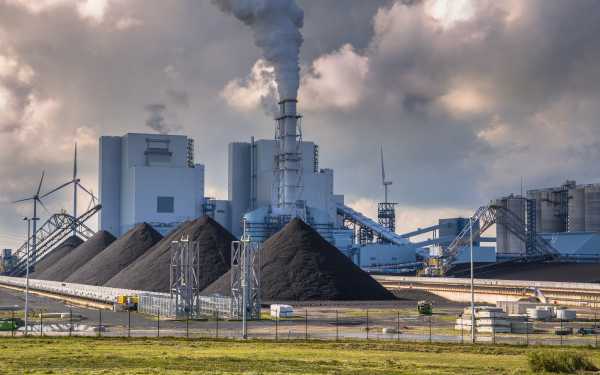
In June, the Trump administration unveiled its proposed replacement for the Clean Power Plan, Obama’s program to reduce greenhouse gas emissions from existing power plants. Last week, a coalition of 29 states and cities filed a lawsuit to block the rule, claiming that it violates Trump’s obligations under the Clean Air Act.
And on Sunday, nonpartisan research firm Resources for the Future, along with researchers from the Harvard T.H. Chan School of Public Health, Syracuse University, and the Boston University School of Public Health, released new research showing that even Environmental Protection Agency’s meager projected pollution reductions from its rule are likely overestimated.
The story of EPA carbon regulations is long and tangled, but if you’re in a hurry, here’s the short version: The president’s plan is the bare minimum the EPA thinks it can get away with. It won’t reduce emissions much; in fact, it is likely to increase both carbon dioxide and local air pollutants, along with their health impacts, in more than a dozen states. (Seriously.) And the EPA is going to have a hell of a time justifying it to a court.
Now let’s walk through the longer version of the story. Most coverage so far has focused on the plan’s striking weakness (for obvious reasons), but there are several other aspects of the fight over power plant emissions that are worth understanding. How these policy and legal questions get resolved will have enormous influence on what the next administration — if we ever make it to another administration — can do to address climate change.
So, with that in mind, here are the six things you need to know about Trump’s Affordable Clean Energy (ACE) plan.
1) Trump’s EPA is regulating carbon because it has to, not because it wants to
The Trump administration has repeatedly expressed skepticism toward climate change, hostility toward regulation, and an all-consuming hatred for anything with former President Barack Obama’s fingerprints on it. If it had its druthers, it wouldn’t regulate carbon emissions at all.
But it has to. In 2007’s Massachusetts v. EPA, the Supreme Court ruled that if the EPA finds that greenhouse gases are a threat to public health, it must regulate them as air pollutants under the Clean Air Act. In 2009’s Endangerment Finding, the EPA found that, yes, greenhouse gases are a danger to public health.
Those twin developments created a set of legal obligations for the agency. It must:
- regulate mobile sources of greenhouse gases, i.e., vehicles — that was Obama’s fuel economy standards, which Trump is busy gutting;
- regulate new stationary sources of greenhouse gases, i.e., power plants and refineries — that was Obama’s 2013 limits on new sources, which Trump is busy gutting;
- regulate existing stationary sources of greenhouse gases — that was the Clean Power Plan (CPP), which Trump is now gutting.
Some of the wackier denialists in the conservative coalition were pressing the EPA to challenge the endangerment finding (and former Administrator Scott Pruitt considered it). If successful, that would negate all these obligations. But, perhaps perceiving how futile and silly such an effort would be, the EPA elected not to.
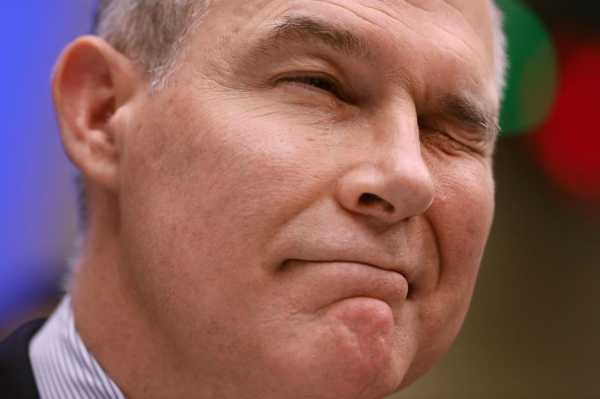
So it was forced to replace, not just cancel, Obama’s fuel economy standards, replace, not just cancel, Obama’s regulations on new power plants, and replace, not just cancel, the Clean Power Plan. Thus, ACE.
2) The legal question at the heart of the dispute over CPP has never been decided by courts
The Clean Air Act (specifically, Section 111) calls upon the EPA to set air pollution standards by determining “the degree of emission limitation achievable through the application of the best system of emission reduction … adequately demonstrated.”
Just what constitutes the “best system of emission reduction” is at the heart of the dispute between CPP proponents (environmentalists and Democrats) and critics (polluting industries and Republicans).
After studying the issue for several years, Obama’s EPA realized a few things. First, power plants do not operate in isolation; they are parts of a large, interconnected grid, a single machine, and their operations are determined by its needs. And second, states are already busy reducing greenhouse gas emissions using a variety of policy tools connected to grid operations — fuel-switching from coal to natural gas, adding renewables, energy efficiency, etc.
The EPA concluded that the “best” (most efficient and economical) way to reduce power plant emissions is to support those efforts by requiring states to reduce the average carbon intensity of their overall power sectors. They could reduce the emissions of individual plants, or increase energy efficiency, or build more renewables, or replace coal plants with natural gas. In the argot, the plan allowed emission reductions “beyond the fenceline” of individual power plants.
By setting targets at the aggregate level, rather than at the level of individual power plants, the CPP gave states maximum flexibility (something conservatives ostensibly support in general). It left them more than one tool for compliance.
The alternative — requiring only emission reductions “within the fenceline,” at individual plants — was seen as untenable. The fact is, an individual fossil fuel power plant just doesn’t have the capacity to reduce its greenhouse gas emissions much (absent carbon capture and sequestration, which is still wildly expensive). It can operate more efficiently, getting more power per unit of fuel, but those are improvements at the margin. The only practical way to get substantial reductions from the power sector is to require aggregate reductions.
As soon as the CPP was proposed, a large coalition of 24 states, along with several companies and other groups, sued. (There were actually multiple suits that eventually got consolidated into one.)
The main legal critique was simple: By regulating beyond the fenceline, the EPA had exceeded its statutory authority. (For an in-depth look at the fenceline question, you can read this post.)
In January 2016, the DC Circuit Court of Appeals denied a motion to stay the CPP while it was under legal consideration. Just a few weeks later, in February, the Supreme Court overrode that decision with a 5-4 decision of its own, issuing a stay on the CPP until the litigation was settled.
Although both sides had already made their case in circuit court, the court agreed to the EPA’s request that it withhold judgment until EPA issues a replacement plan. Since, as was inevitable, that replacement plant has sparked a lawsuit, it will end up in court anyway.
Long story short: Despite what you’d think from listening to Trump administration rhetoric, no court has yet ruled on the fenceline question. And a court eventually must.
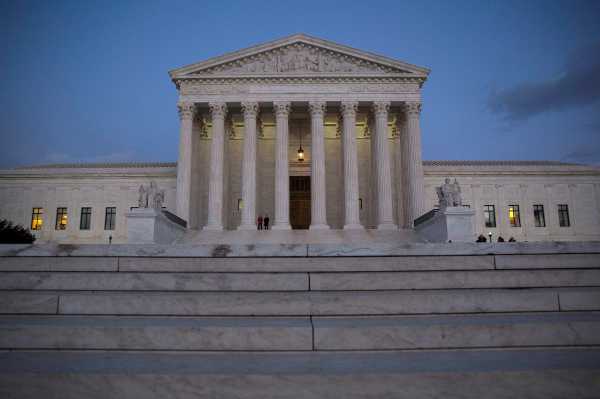
Obama’s EPA did its homework, and beyond-the-fenceline proponents are confident of their case, at least in circuit court. But the case is likely to go back to the Supreme Court, and, well, we all know how that’s going.
If courts end up rejecting the Trump EPA’s inside-the-fenceline interpretation, it would throw the agency into chaos. But it would give a Democratic successor administration free rein to issue a new, stronger CPP (which the Resources for the Future analysis says could reduce electricity sector emissions 37 percent above the baseline case by 2030).
If courts accept the narrow interpretation, it would be an enormous blow to Democratic efforts on climate change going forward, putting the Clean Air Act, at least Section 111, out of reach as a carbon reduction tool.
3) ACE is so weak, it could potentially lead to higher emissions
Trump’s EPA accepted the inside-the-fenceline restriction that Obama’s EPA found untenable, so ACE only applies to individual plants. Consequently, it won’t reduce carbon emissions much.
The CPP did not set mandatory carbon reduction targets, but the EPA calculated that if states opted for the most stringent pollution control plans, the CPP would yield electricity sector emission reductions of 32 percent below 2005 levels by 2030. (Since EPA’s 2015 analysis, progress on clean energy has been incredibly rapid. We now know that most of the emission reductions CPP targeted were going to happen anyway. Thus the need for an updated CPP.)
ACE, on the other hand, might not reduce emissions at all relative to baseline. It might even raise them. Yes, you read that right: Trump’s pollution rule might produce more pollution than no rule at all.
How is that possible? Well, remember, ACE applies only to individual power plants (coal plants, mostly), and the only way to improve the emissions performance of individual power plants is through efficiency upgrades. But efficiency upgrades — heat rate improvements (HRI), in the lingo — make those plants cheaper to run.
If they’re cheaper to run, utilities will run them more often. That will increase their net emissions. Resources for the Future refers to this as “rebound” and says the EPA underestimates it in several ways.
First, the agency plans changes to New Source Review — pollution standards that must be met by new or upgraded plants — to make it easier to upgrade coal plants without triggering new standards. (See No. 4, below.) That will have the effect of boosting HRI. In the initial draft release of ACE, those standards changes were included. But in the final rule, they were left out, enabling the EPA to lowball HRI.
But the agency still plans to make those changes to New Source Review; by failing to include them in its analysis of ACE, it is deliberately hiding the ball.
Second, in its analysis, the EPA excluded two of the best technologies for HRI (blade path upgrades and redesign/replace economizers — don’t ask). And third, the agency’s analysis excludes the Section 45Q tax credit passed by Congress, which would offer tax credits for carbon capture and sequestration.
Long story short, even the administration’s paltry project carbon emission reductions from ACE — between 0.7 and 1.5 percent lower than baseline — are likely overstated. In fact, coal plants are likely to run more than EPA estimates, will means CO2 will fall less (or not at all) and other local air pollutants will increase in many states, with all their concomitant health effects.
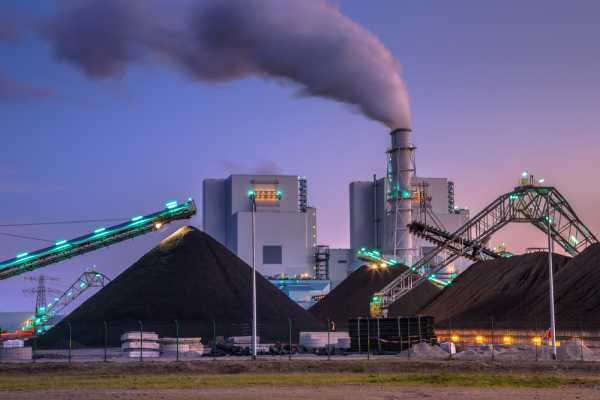
A final note: reductions of 0.7 to 1.5 percent are basically a rounding error and they hinge entirely on the market fate of coal plants. Resources for the Future ran an analysis of several different market scenarios and found that even small changes in market assumptions — demand, the price of natural gas, etc. — could wipe out those gains.
Basically, ACE isn’t a serious plan to reduce carbon emissions. It’s more of a statement by Trump’s EPA that it doesn’t have the power to reduce power sector carbon emissions.
4) Gutting New Source Review (which goes along with ACE) could also raise emissions
From an environmental perspective, the original sin of the Clean Air Act (at least the 1970 and 1990 amendments to the CAA) was grandfathering.
The presumption was that new power plants would be built with modern pollution controls and old plants would gradually phase out and close down. So existing plants were grandfathered in — they didn’t have to meet the new standards.
To ensure that existing plants didn’t increase their pollution in the meantime, the CAA standards applied not only to new plants but to existing plants that made substantial upgrades that would increase their pollution. More specifically, “any physical change in, or change in the method of operation of, a stationary source which increases the amount of any air pollutant emitted by such source or which results in the emission of any air pollutant not previously emitted” would trigger the standards.
Any utility planning a new plant or a plant upgrade has to submit to the New Source Review to ensure they’re meeting pollution standards.
So if utilities built new plants, they had to meet modern pollution standards. If they upgraded old plants, they had to meet modern pollution standards. But if they just kept their polluting old plants running and running forever, without upgrades, they didn’t have to meet modern pollution standards. And so that’s what they did.
Consequently, the US has been saddled with a large, old fleet of dirty coal plants for decades, with utilities making just enough repairs to keep them in operation but not enough modifications and upgrades to trigger New Source Review. The average age of a US coal plant is 39 years — roughly its rated life span.
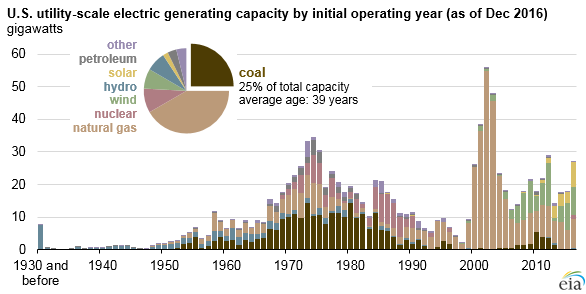
Environmentalists have complained about these plants for ages, saying that utilities should shut them down. Utilities have also complained, saying the prohibitive costs of NSR are preventing them from upgrading their fleets.
Obama’s CPP was supposed to finally get at those old plants. Given the way NSR has traditionally worked, ACE would have too. It would have forced plants to make efficiency improvements, which would have triggered NSR, which would have triggered tighter standards. (By EPA’s own estimate, 80 percent of coal-fired power plants do not meet current NSR standards for local air pollutants.)
Trump’s EPA doesn’t want utilities to face the terrifying prospect of being forced to clean up their old fleets (“enormous new permitting burdens”), so it plans to “reform” New Source Review. It will no longer be an increase in total emissions that triggers the review — only an increase in a plant’s hourly emissions rate. If a plant reduces its hourly emissions rate, increases its total runtime, and thus increases its total emissions, no problem.
New Source Review is one of the very few regulatory tools available to reach these existing, dirty plants, and EPA wants to take it off the table. Long-term, that could free lots of utilities to update their dirty old coal plants (to comply with ACE) and keep them running even longer.
5) Even after torturing the numbers, the EPA couldn’t make ACE look like a good deal
The awkward fact for Republicans has always been that air quality regulations work. They produce social, economic, and health benefits well in excess of their compliance costs. There is a robust literature and a long practical history showing as much. (See here for the EPA’s cost-benefit analyses on the CAA, which links to dozens of independent sources.)
At every new round of regulations, conservatives and polluting industries complain that they are too onerous, that they will destroy the economy, cost jobs, raise energy prices. And every time, it doesn’t happen. Compliance proves cheaper than expected, the economy continues growing, and public health improves.
Republicans have not responded to this reality by accepting that they were wrong about air quality regulations. Instead, they’ve responded by trying to game the numbers, massaging cost-benefit calculations to give more amenable outcomes.
That continues in the ACE proposal. As Brad Plumer reported in a great New York Times piece, the EPA no longer counts climate benefits that occur outside US borders, which is both morally and atmospherically daft.
But even more daft, rather than the Obama administration’s 3 percent discount rate, Trump’s EPA is using a discount rate of 7 percent.
Discount rates refer to how much future benefits are “discounted” when expressed in today’s dollars — or more colloquially, how highly we value future benefits. (A higher rate means we value them less; a lower rate, more. A rate of zero means we value them equally as much as present benefits.)
A 7 percent discount rate is at the high end of what markets and governments use for personal investments, i.e., how much individual investors value their future profits. But applied to intergenerational investments, i.e., how much sacrifice we’re collectively willing to impose on future generations, it is sociopathic.
“If you use a rate above 5 percent,” Maureen Cropper, an economist at the University of Maryland, told Plumer, “you’re essentially saying that we shouldn’t worry today about anything that happens 100 years from now.” (If you want to dig deeper, here is a post I once did on discount rates, using otters.)
Using these tricks and others, all of which make the rule more legally vulnerable, EPA cut its estimate of the “social cost of carbon” — the total societal value of a ton of GHG emission reductions — from around $50 (the Obama administration’s median number, arrived at after an extensive interagency process that Trump has tried to cancel) to between $1 and $7 (a value rectally extracted by Trump’s EPA over the course of months).
Naturally, that makes cutting greenhouse gases look a lot less attractive. But here’s the first twist.
Even if the climate benefits of the CPP are cut close to nothing, the other benefits, primarily in reductions of local air pollutants like SO2 and NOx, still more than pay for it. That’s true even though the EPA ignored many benefits it claimed to be unable to quantify.
EPA just couldn’t make the numbers work for it.
And so, as Lisa Friedman first reported for the New York Times, according to the EPA’s analysis, “the new rules could also lead to as many as 1,400 premature deaths annually by 2030 from an increase in the extremely fine particulate matter that is linked to heart and lung disease, up to 15,000 new cases of upper respiratory problems, a rise in bronchitis, and tens of thousands of missed school days.” (And the Resources for the Future analysis shows that those numbers are almost certainly conservative.)
Yes, the EPA is proposing a policy that it concedes will lead to 1,400 premature deaths, 48,000 new cases of “exacerbated asthma,” and at least 21,000 new missed days of school every year, through 2030. That should be fun to justify to a court.
And as Nathanael Johnson noted in Grist, EPA’s analysis shows that ACE’s net costs outweigh its net benefits:
“When an agency wants to do something that’s harmful to the American people, it typically tries to hide it,” Richard Revesz of the Institute for Policy Integrity told Johnson. “What’s unusual here is that the EPA just comes out and says it.”
However — and here’s the second twist — Trump’s EPA is currently working to rectify the situation.
As Friedman smartly notes, the massive study upon which EPA bases much of its work on the health effects of particulates (the famous Harvard “Six Cities” study) would be excluded from EPA consideration if the administration’s daffy “secret science” proposal goes through.
As Vox’s Umair Irfan reported, the proposal would exclude from EPA analysis any study in which participants’ identities are concealed — which is most big public health studies, for obvious reasons. Experts are almost unanimously horrified by the proposal, including the EPA’s science advisers, but it appears to be moving forward.
So enjoy this particular EPA analysis (yet another triumph of career staff over their political hack bosses). The next time EPA runs cost-benefit analysis on an air rule, it won’t include many of the health benefits of pollution reductions, because it will have consciously prevented itself from knowing about them.
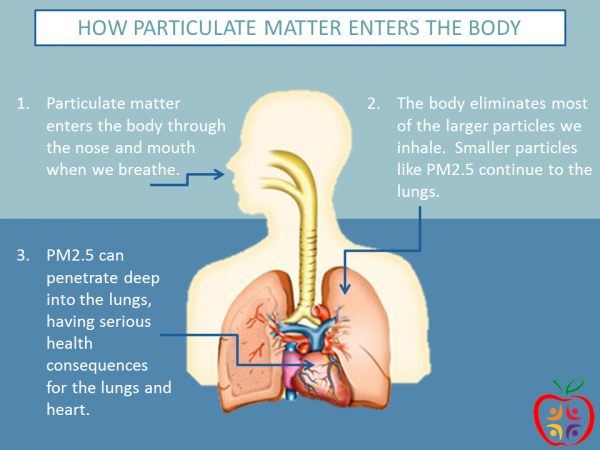
6) We may have already reached the CPP’s 2030 goal; it’s time for more ambition, not less
According to the Sustainable Energy In America Factbook, US power sector emissions are down 28 percent from 2005 levels. The researchers at Rhodium Group estimate that they will be down 37 percent by 2025.
That means the CPP reach target for 2030 — 32 percent reduction — will likely be achieved in the next few years, just based on current market trends.
This extraordinary progress has been hard-won, utility by utility, and the CPP — even though it never went into effect! — was a big part of that. The tangible prospect of federal regulations got every state and utility, even those with no interest in climate change, thinking, talking, and planning around carbon reductions. And guess what? When utilities start looking around in earnest, they find that cutting carbon is pretty easy.
Reducing electricity sector emissions has proven much cheaper and easier than envisioned even by the optimists at Obama’s EPA. The sensible thing to do in this situation is to boost the plan’s ambition.
It is difficult to know just how much the weakening of CPP into ACE will blunt that progress — how much progress still depends on policy and how much it has taken on a market momentum of its own. (One thing upon which virtually every expert agrees: US coal is going to continue dying.)
Researchers at Carnegie Mellon University took a look at prospects for the electricity sector hitting Paris climate targets without the CPP. They found that it basically depends on natural gas prices. If they stay low or fall further, there’s a chance of hitting 2025 and 2030 Paris targets. Even if they rise a bit, Paris targets are still within reach, though “it becomes essential for many of the existing regulatory and tax inducements to be retained, and perhaps enhanced.” (In particular, they mention renewing federal renewable energy tax credits, which are set to expire.)
But there is broad consensus in the energy community that even if the electricity sector can limp past the 2030 finish line without (much) supportive federal policy, there’s no way the US will get on track for its longer-term carbon targets (80 percent reductions by 2050) without concerted policy support.
Depending on how courts rule on the fenceline issue, it’s possible that a Democratic administration that takes power in January 2021 could almost immediately issue a strengthened CPP, targeting, say, 80 percent electricity sector reductions by 2030, which will definitely wipe out all the coal and rein in natural gas.
Alternatively, if a Supreme Court decision with Brett Kavanaugh restricts the EPA to inside the fenceline, the prospect of substantially reducing carbon emissions using EPA regulations will basically be off the table, leaving federal legislation — or action at the state and local level — the only road forward on climate change.
Even more alternatively, if Trump wins reelection, the EPA by 2024 is likely to be a thoroughly degraded agency, its rules and staff stacked in favor of industry and most of its institutional memory and expertise lost. And the US will be out of the global climate effort entirely, a rogue actor lurching in the direction of myopic greed during the years the world most needs solidarity.
Sourse: vox.com






